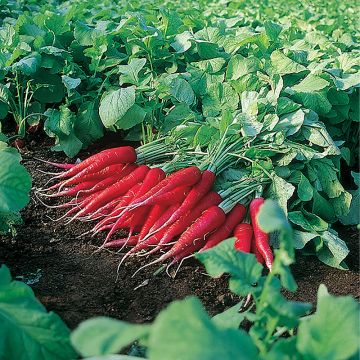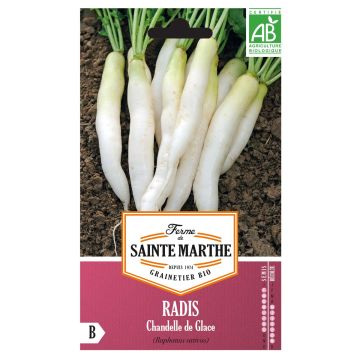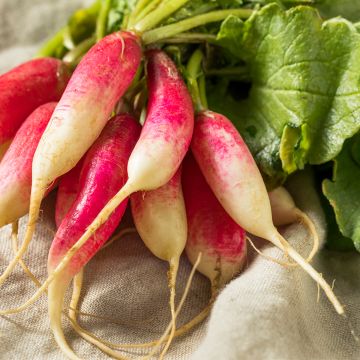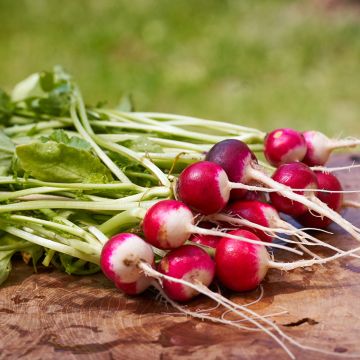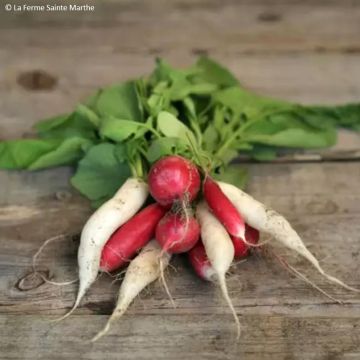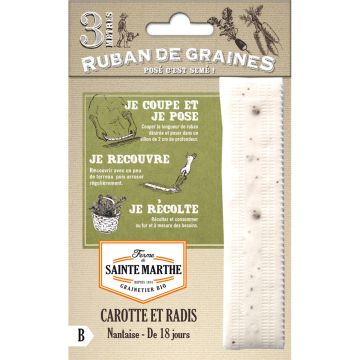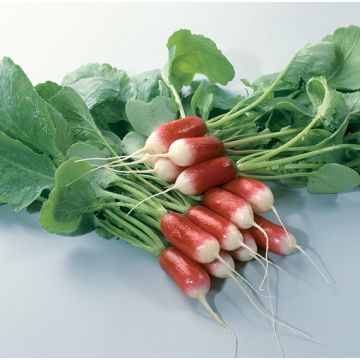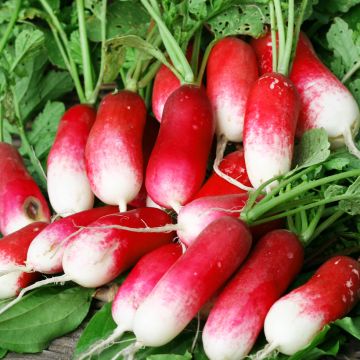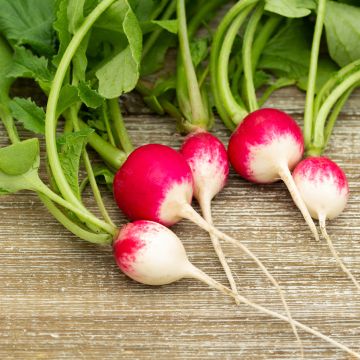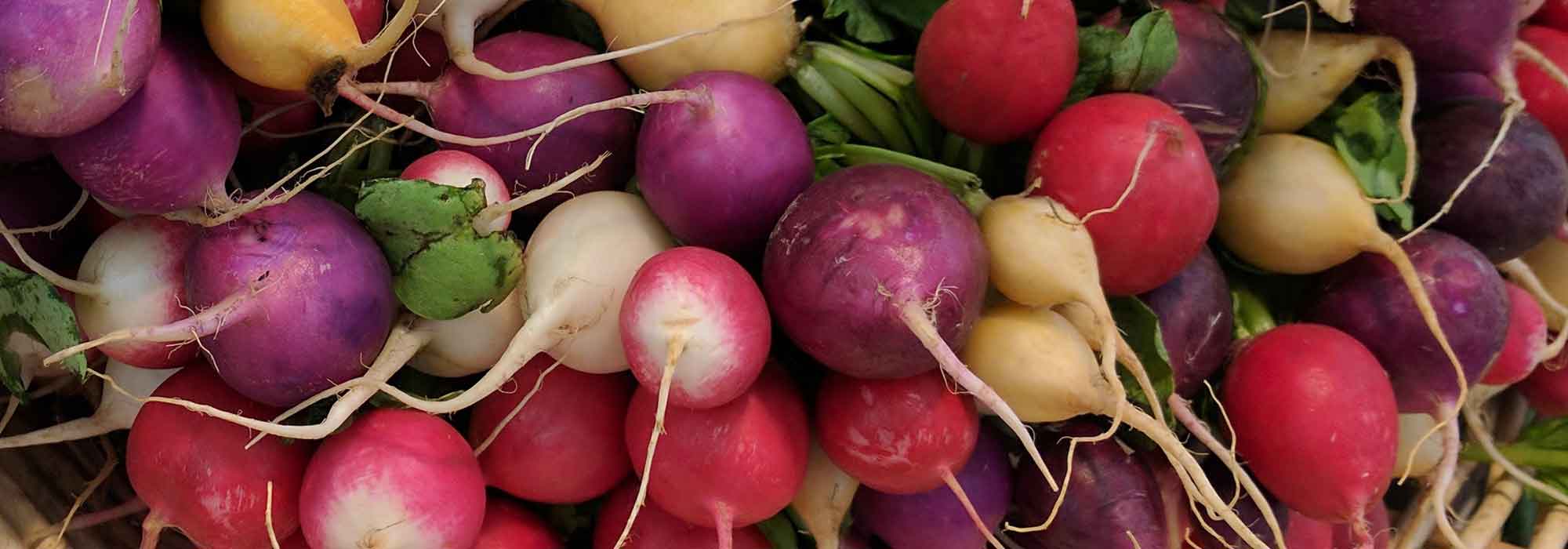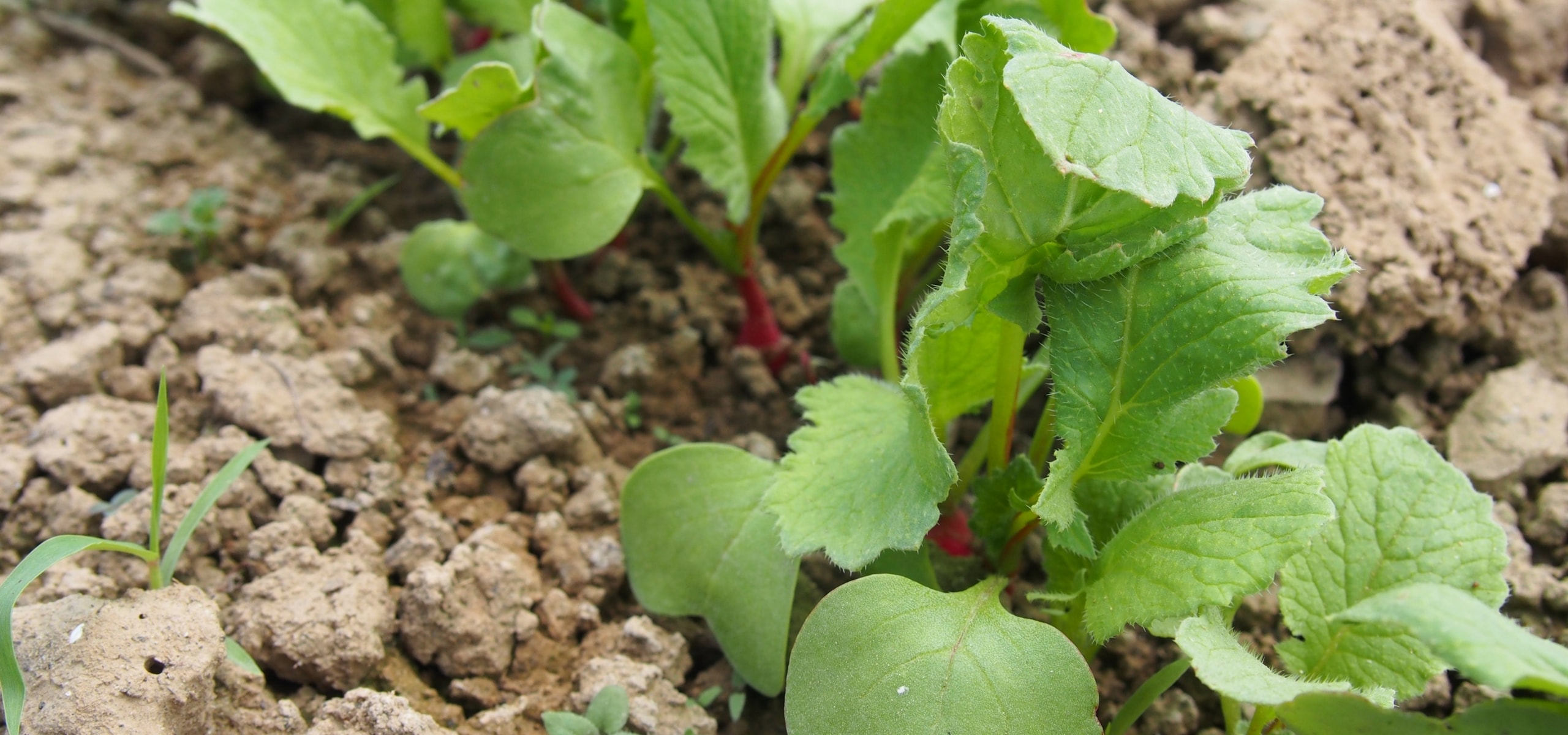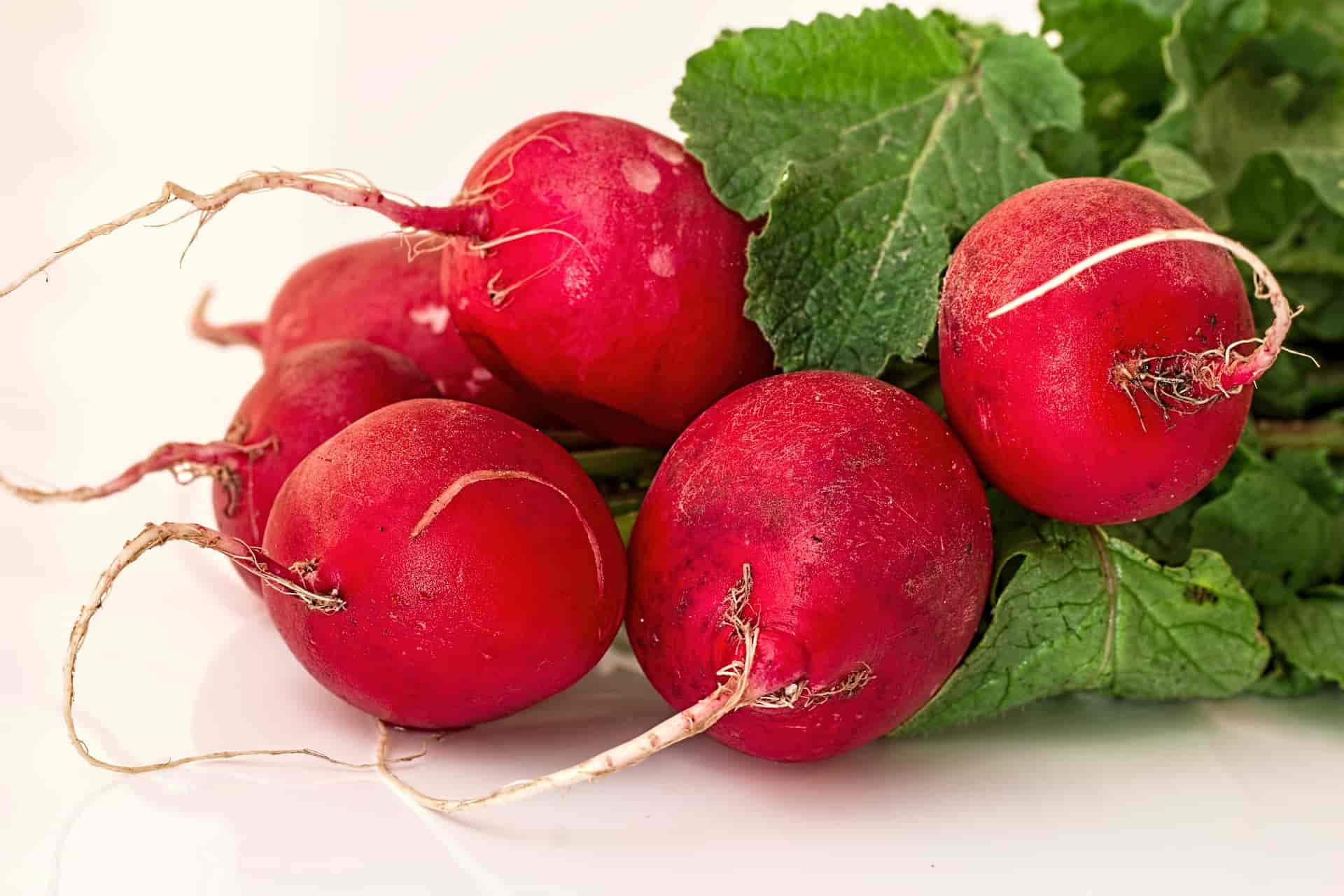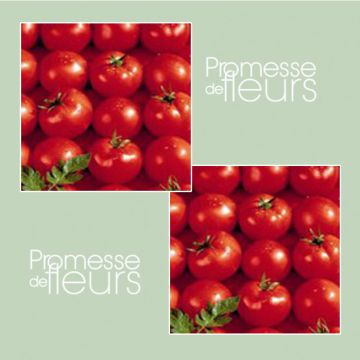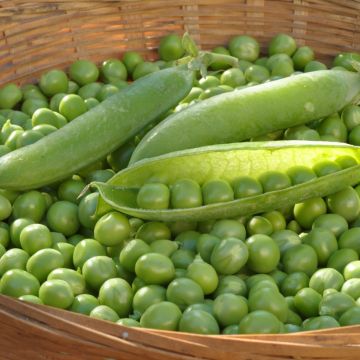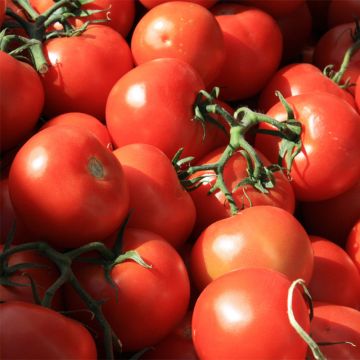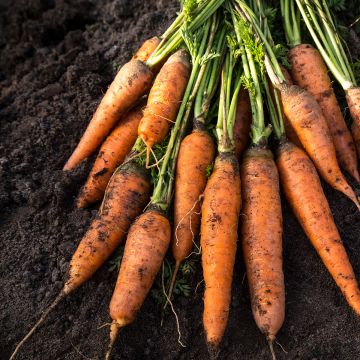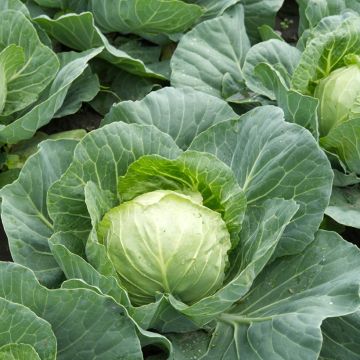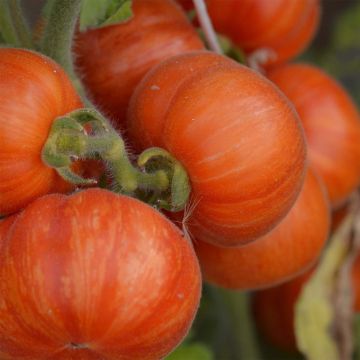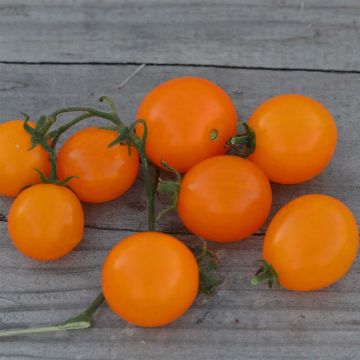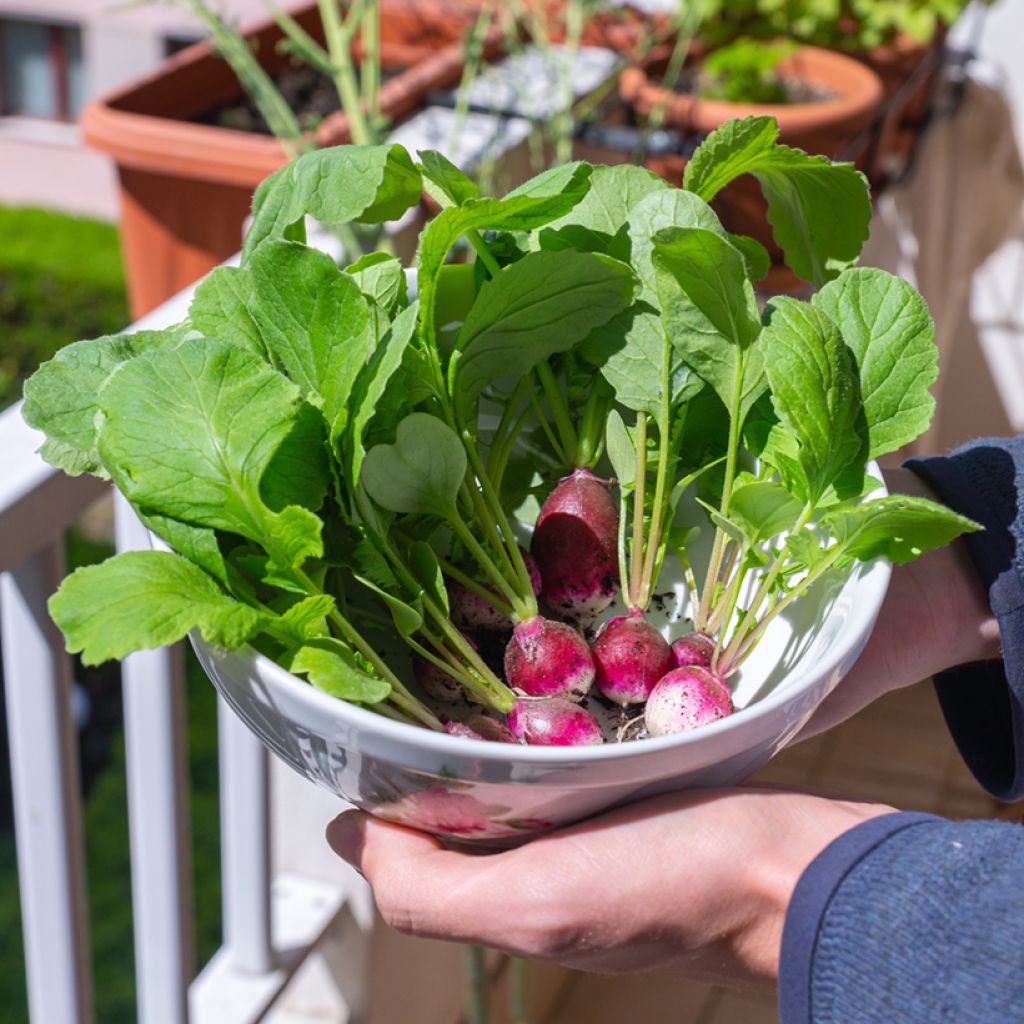

Round Pink and White Radish (National 2) - Ferme de Sainte Marthe seeds


Round Pink and White Radish (National 2) - Ferme de Sainte Marthe seeds
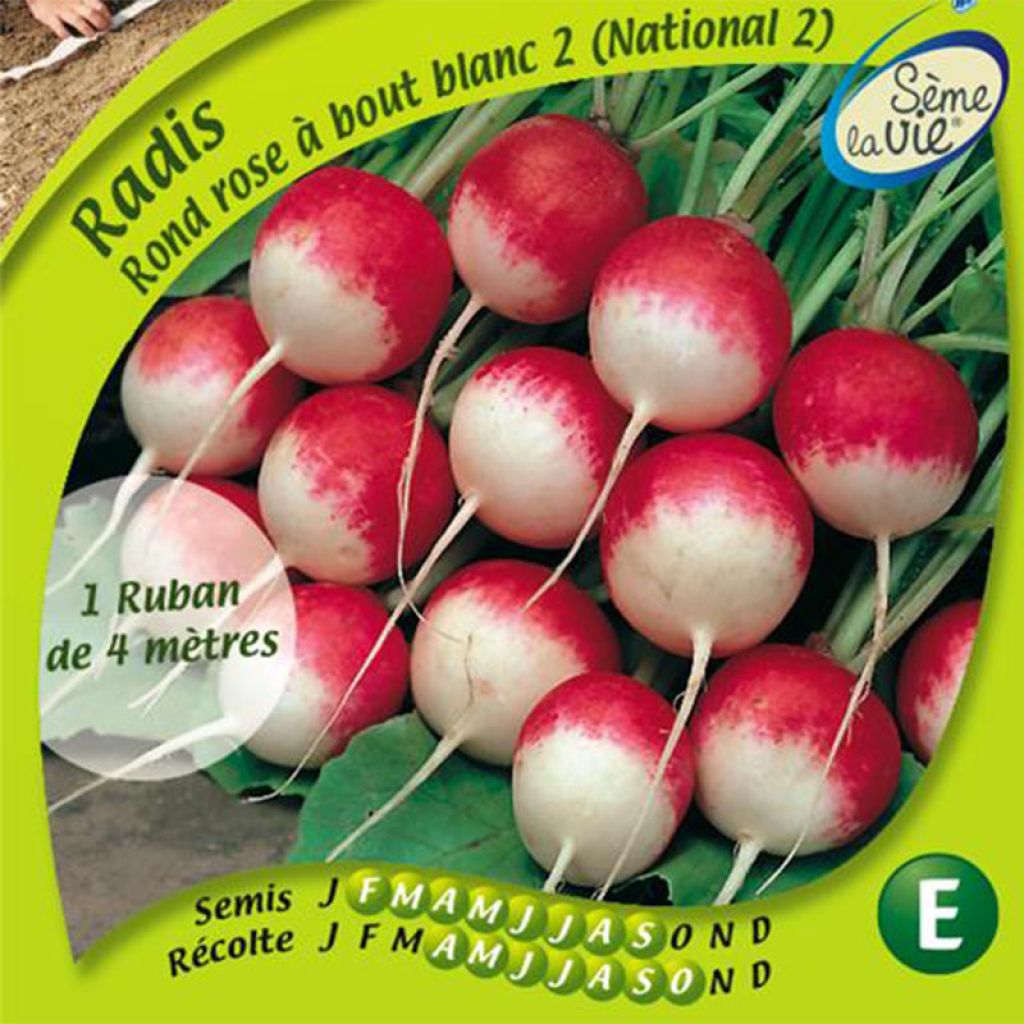

Round Pink and White Radish (National 2) - Ferme de Sainte Marthe seeds
Round Pink and White Radish (National 2) - Ferme de Sainte Marthe seeds
Raphanus sativus rond rose à bout blanc 2
Radish, Garden Radish
I remain in anticipation of planting. One thing is, as a general rule, no disappointment with the young plants received so far from the 'flower promise'. Thank you for the quality of these.
Brunhilde P., 09/02/2018
Special offer!
Receive a €20 voucher for any order over €90 (excluding delivery costs, credit notes, and plastic-free options)!
1- Add your favorite plants to your cart.
2- Once you have reached €90, confirm your order (you can even choose the delivery date!).
3- As soon as your order is shipped, you will receive an email containing your voucher code, valid for 3 months (90 days).
Your voucher is unique and can only be used once, for any order with a minimum value of €20, excluding delivery costs.
Can be combined with other current offers, non-divisible and non-refundable.
Why not try an alternative variety in stock?
View all →This plant carries a 6 months recovery warranty
More information
We guarantee the quality of our plants for a full growing cycle, and will replace at our expense any plant that fails to recover under normal climatic and planting conditions.
Description
This Round Pink and White Radish is a semi-early variety of radish that can be sown from February to September. Its edible root is round, bright pink with a white tip. Its firm and crunchy flesh is ideal for eating raw in salads or as an appetiser. Harvest from April to September.
The radish is a hardy annual or biennial vegetable plant, belonging to the Brassicaceae family. The root is the main part consumed, either raw or cooked, and the leaves can also be used in soups or stews. Radishes come in different colours, with red being the most common, but there are also pink, white, and grey varieties. They are generally classified into two main types: salad radishes, represented by small-rooted varieties, and winter radishes, represented by long-rooted varieties. There are also the Japanese radishes, or "daikon", which have a long, white, conical root and are sometimes sold as turnips. Winter radishes have a large, tapering root with a black, pink, or purple skin. The flesh is white, and the leaves are green and deeply cut, forming a compact base. They have a stronger taste compared to salad radishes and can be eaten cooked, like turnips, or raw, like carrots. Winter radishes have many health benefits, containing vitamin C, sulphur, phosphorus, and magnesium. They are known to be antiscorbutic and diuretic, and are recommended for liver and gallbladder issues.
Harvesting and Storage
Salad or summer radishes can be harvested 4 to 6 weeks after sowing. It is important to harvest them regularly once they have formed, without letting them grow too large, to avoid them becoming hollow, pungent, or indigestible. Summer radishes should be consumed quickly. The freshly harvested leaves can be cooked into a delicious soup.
Winter radishes can be harvested 4 to 5 months after sowing. Gently lift them with a fork or spade and let them dry on the ground before bringing them indoors. If they are left in the ground during winter, cover the soil with straw.
Gardening Tips
Sowing radishes and carrots in the same row and at the same time naturally separates the carrot seeds. Once the radishes are harvested, there will be space left for the carrots to grow into. Planting mint alongside radishes can help repel flea beetles, insects that feed on the leaves and create small irregular holes. To have crunchy radishes throughout the season, it is recommended to sow them every 2 to 3 weeks in your garden or in containers.
Organic or "AB" seeds are derived from plants grown in organic farming (without the use of pesticides). They undergo no treatment after harvest. These seeds are suitable for organic market gardening.
Harvest
Plant habit
Foliage
Botanical data
Raphanus
sativus
rond rose à bout blanc 2
Brassicaceae
Radish, Garden Radish
Cultivar or hybrid
Biennial
Planting and care
Sowing
The staggered sowing of radishes every month is one of the easiest to do. The seeds are placed directly in the ground, in a loosened soil, in rows. Barely cover the seeds with 2cm (1in) of potting soil or fine soil. Lightly press down with the back of the rake and water with a fine spray. Keep sufficiently moist until germination. Radish seeds can be sown all year round, with a preference for late winter to early summer, avoiding periods of high heat, and then in late summer to early autumn, when the soil is still warm, before the first frosts.
Forced radish sowing takes place in situ from February, but protection such as a cold frame or tunnel should be provided until the end of the frosts. The sowing is preferably done broadcast for these early radishes.
Summer radish sowing can be done from May. You can sow as you please until the end of summer, or even at the beginning of autumn if the climate allows, directly in the ground, in rows spaced 10 to 20cm (4 to 8in) apart.
Winter radish sowing takes place from June to November depending on the climate, directly in the ground, in rows spaced 20 to 30cm (8 to 12in) apart.
Radishes like clear and sunny locations, and appreciate light shade in the heart of summer.
Maintenance
Once the seeds have germinated, they need to be thinned out. This operation consists of removing the weakest plants, leaving only the strongest ones, every 4 to 5cm (2in) for radishes for all months, and 10 to 15cm (4 to 6in) for others.
The soil should be kept relatively moist through regular, but not excessive, watering. Hoeing, weeding, and mulching, combined with watering, will help limit the production of spicy radishes. In addition, preserving moisture will prevent flea beetle invasions, which thrive in hot and dry weather.
Seedlings
Care
Intended location
Planting & care advice
-
, onOrder confirmed
Reply from on Promesse de fleurs
Similar products
Haven't found what you were looking for?
Hardiness is the lowest winter temperature a plant can endure without suffering serious damage or even dying. However, hardiness is affected by location (a sheltered area, such as a patio), protection (winter cover) and soil type (hardiness is improved by well-drained soil).

Photo Sharing Terms & Conditions
In order to encourage gardeners to interact and share their experiences, Promesse de fleurs offers various media enabling content to be uploaded onto its Site - in particular via the ‘Photo sharing’ module.
The User agrees to refrain from:
- Posting any content that is illegal, prejudicial, insulting, racist, inciteful to hatred, revisionist, contrary to public decency, that infringes on privacy or on the privacy rights of third parties, in particular the publicity rights of persons and goods, intellectual property rights, or the right to privacy.
- Submitting content on behalf of a third party;
- Impersonate the identity of a third party and/or publish any personal information about a third party;
In general, the User undertakes to refrain from any unethical behaviour.
All Content (in particular text, comments, files, images, photos, videos, creative works, etc.), which may be subject to property or intellectual property rights, image or other private rights, shall remain the property of the User, subject to the limited rights granted by the terms of the licence granted by Promesse de fleurs as stated below. Users are at liberty to publish or not to publish such Content on the Site, notably via the ‘Photo Sharing’ facility, and accept that this Content shall be made public and freely accessible, notably on the Internet.
Users further acknowledge, undertake to have ,and guarantee that they hold all necessary rights and permissions to publish such material on the Site, in particular with regard to the legislation in force pertaining to any privacy, property, intellectual property, image, or contractual rights, or rights of any other nature. By publishing such Content on the Site, Users acknowledge accepting full liability as publishers of the Content within the meaning of the law, and grant Promesse de fleurs, free of charge, an inclusive, worldwide licence for the said Content for the entire duration of its publication, including all reproduction, representation, up/downloading, displaying, performing, transmission, and storage rights.
Users also grant permission for their name to be linked to the Content and accept that this link may not always be made available.
By engaging in posting material, Users consent to their Content becoming automatically accessible on the Internet, in particular on other sites and/or blogs and/or web pages of the Promesse de fleurs site, including in particular social pages and the Promesse de fleurs catalogue.
Users may secure the removal of entrusted content free of charge by issuing a simple request via our contact form.
The flowering period indicated on our website applies to countries and regions located in USDA zone 8 (France, the United Kingdom, Ireland, the Netherlands, etc.)
It will vary according to where you live:
- In zones 9 to 10 (Italy, Spain, Greece, etc.), flowering will occur about 2 to 4 weeks earlier.
- In zones 6 to 7 (Germany, Poland, Slovenia, and lower mountainous regions), flowering will be delayed by 2 to 3 weeks.
- In zone 5 (Central Europe, Scandinavia), blooming will be delayed by 3 to 5 weeks.
In temperate climates, pruning of spring-flowering shrubs (forsythia, spireas, etc.) should be done just after flowering.
Pruning of summer-flowering shrubs (Indian Lilac, Perovskia, etc.) can be done in winter or spring.
In cold regions as well as with frost-sensitive plants, avoid pruning too early when severe frosts may still occur.
The planting period indicated on our website applies to countries and regions located in USDA zone 8 (France, United Kingdom, Ireland, Netherlands).
It will vary according to where you live:
- In Mediterranean zones (Marseille, Madrid, Milan, etc.), autumn and winter are the best planting periods.
- In continental zones (Strasbourg, Munich, Vienna, etc.), delay planting by 2 to 3 weeks in spring and bring it forward by 2 to 4 weeks in autumn.
- In mountainous regions (the Alps, Pyrenees, Carpathians, etc.), it is best to plant in late spring (May-June) or late summer (August-September).
The harvesting period indicated on our website applies to countries and regions in USDA zone 8 (France, England, Ireland, the Netherlands).
In colder areas (Scandinavia, Poland, Austria...) fruit and vegetable harvests are likely to be delayed by 3-4 weeks.
In warmer areas (Italy, Spain, Greece, etc.), harvesting will probably take place earlier, depending on weather conditions.
The sowing periods indicated on our website apply to countries and regions within USDA Zone 8 (France, UK, Ireland, Netherlands).
In colder areas (Scandinavia, Poland, Austria...), delay any outdoor sowing by 3-4 weeks, or sow under glass.
In warmer climes (Italy, Spain, Greece, etc.), bring outdoor sowing forward by a few weeks.






























